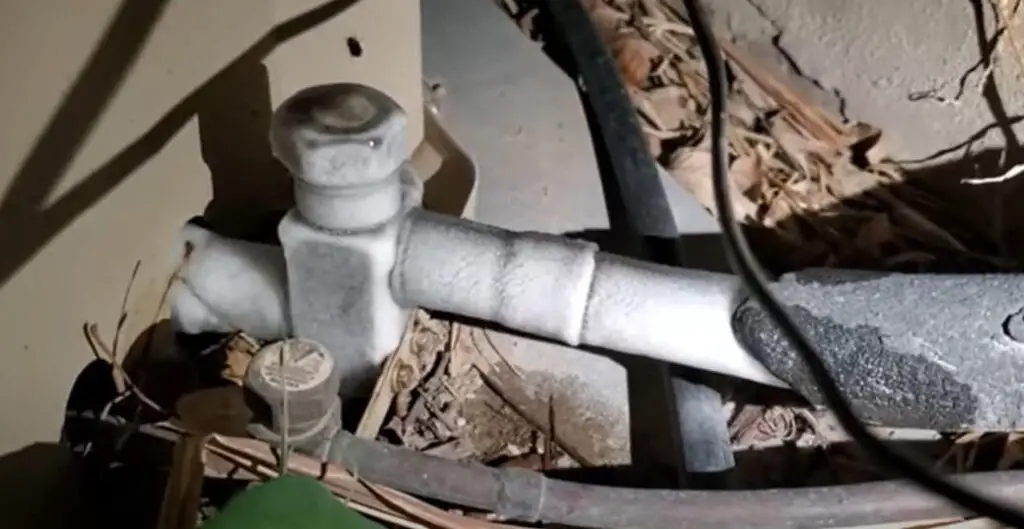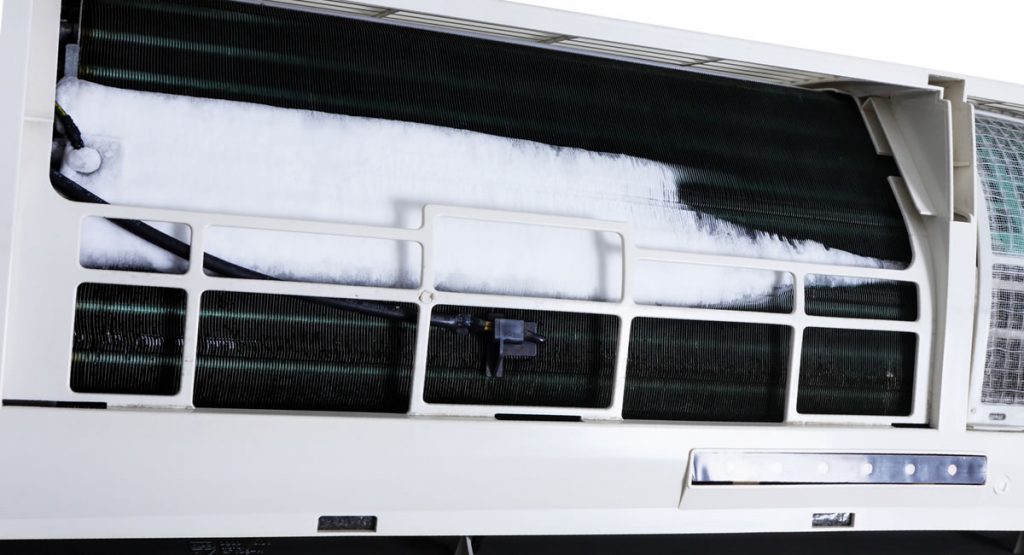How to Handle a Frozen AC Pipe: Professional Advice
How to Handle a Frozen AC Pipe: Professional Advice
Blog Article
Are you currently looking for help and advice Why Is Ice On My Outside Air Conditione?

Intro
Finding that your AC pipe is iced up can be worrying, especially during hot summertime when you count on your a/c one of the most. Understanding what to do in such a circumstance is important to avoid additional damage to your air conditioning system and ensure your comfort inside.
Understanding the Causes
A number of elements can contribute to the freezing of an air conditioner pipeline. Comprehending these causes can help you deal with the issue effectively.
Absence of Airflow
One common cause of an icy air conditioning pipeline is inadequate air flow. When the air movement over the evaporator coil is restricted, it can create the coil to drop below freezing temperature level, resulting in ice development on the pipe.
Reduced Refrigerant Levels
Insufficient cooling agent degrees in your a/c system can additionally result in a frozen pipeline. Low refrigerant degrees can trigger the pressure in the system to go down, causing the freezing of wetness on the evaporator coil.
Cold Weather Conditions
In colder climates, freezing temperature levels outside can contribute to the freezing of AC pipes. If your air conditioner unit is not appropriately shielded or if there are leakages in the ductwork, chilly air can infiltrate the system, causing the pipe to ice up.
Dirty Air Filters
Filthy or stopped up air filters can restrict airflow in your air conditioner system, causing different issues, consisting of a frozen pipe. It's necessary to replace or cleanse your air filterings system consistently to make sure correct air flow and stop ice build-up.
Signs of a Frozen A/c Pipe
Identifying the indications of a frozen air conditioner pipe is important for prompt activity.
Decreased Airflow
If you observe a significant decrease in air flow from your vents, it could suggest a frozen pipeline.
Ice Buildup on the Pipe
Visible ice build-up on the refrigerant line or the evaporator coil is a clear indicator of a frozen AC pipe.
Unusual Sounds from the Unit
Uncommon audios, such as hissing or bubbling, coming from your a/c system can indicate that there's ice present on the pipe.
Immediate Actions to Take
When faced with a frozen AC pipeline, it's essential to act quickly to avoid additional damage to your cooling system.
Switching off the a/c
The primary step is to turn off your a/c to prevent the system from running and exacerbating the concern.
Checking for Blockages
Evaluate the area around the interior unit for any type of blockages that may be obstructing air movement, such as furniture or curtains.
Defrosting the Pipe
You can use gentle methods like placing towels taken in cozy water around the frozen pipeline to help thaw it gradually.
Preventive Measures
Taking preventive measures can assist avoid future events of an icy AC pipeline.
Routine Maintenance Checks
Schedule routine upkeep talk to a professional HVAC professional to guarantee that your a/c system is running efficiently.
Changing Air Filters
Frequently replace or clean your air filters to prevent airflow constraints and keep ideal efficiency.
Protecting Exposed Pipes
If your AC pipelines are subjected to chilly temperatures, take into consideration insulating them to stop freezing during cold weather.
Looking For Professional Help
If DIY techniques fail to settle the problem or if you're unsure regarding just how to proceed, it's ideal to seek support from a certified HVAC specialist.
When DIY Methods Fail
If your efforts to thaw the pipeline or address other problems are not successful, it's time to call in an expert.
Relevance of Hiring a Professional HVAC Technician
A certified HVAC specialist has the experience and devices necessary to detect and repair problems with your a/c system securely and efficiently.
Final thought
Managing a frozen a/c pipe can be an irritating experience, but understanding just how to react can aid minimize damage and bring back convenience to your home. By comprehending the causes, recognizing the indications, and taking prompt action, you can successfully deal with the problem and stop future incidents.
Frozen AC Line: Why It Happens & What To Do About It
A frozen AC line can be a rather peculiar sight in a place like Phoenix, Arizona where nothing ever freezes. In this post, we’ll discuss what makes an air conditioner line frozen – and what you can do about it.
Dirty Air Filters
Did you know that you should be cleaning or replacing your air filters on a monthly basis? Failing to do this can result in airflow issues that, in turn, cause your evaporator coils and lines to freeze over. You’ll notice a buildup of ice on both components, although the buildup on your pipes will, of course, be more evident unless you open your air condition up to reveal the coils.
What To Do About It
Give your air filter a good cleaning if it’s reusable. If not, replace the filter outright. Next, switch your air conditioner’s fan setting on and leave it there for 2-3 hours. This will draw warm air in, helping to thaw your evaporator coil. You can also check out this article for some tips on cleaning the coils themselves if you’d like to speed the process up. Before you switch the unit back to its normal state, make sure the supply vents are completely unobstructed and free of dust or other debris.
If you keep having this issue even after replacing your filters regularly, contact a local HVAC repair company and have them inspect your evaporator coil, ductwork, and any other components that may be at fault. If you live in the Phoenix, Arizona area, give American Home Water and Air a call.
Low Refrigerant Levels/Leakage
What To Do About It
Contrary to what air conditioner “recharge” companies often tell their clients about refrigerant, it should never need to be simply refilled. You see, refrigerant runs in what experts refer to as a “closed loop.” Refrigerant really shouldn’t be leaving that loop. If it is, you’ve got a leak.
Paying someone to come and pump more refrigerant into your system (aka “recharge” it) isn’t the solution. Doing that will simply kick the can down the road. Besides, refrigerant leaks can be harmful to the environment and people in your home.
Rather, you need to take care of the leak with the help of a technician. Check out this article for some more information about dealing with air conditioners that are leaking refrigerant. Before you contact a technician, switch your thermostat to the off position. Then, switch the fan setting on and let it run for 2-3 hours so the unit can thaw.
Improper Temperature Setting
Improper temperature settings can also cause a drop in your air conditioner’s pressure. What many people don’t realize is that air conditioners are actually designed to run when temperatures have fallen above roughly 60 degrees Fahrenheit. If you run the unit when it’s cold outside, you’ll run into many issues, including frozen components.

I'm just very interested by How can I fix an air conditioner’s frozen pipe? and I'm hoping you enjoyed the blog post. Appreciated our review? Please share it. Help others find it. Thanks a lot for your time spent reading it.
Click Here Report this page